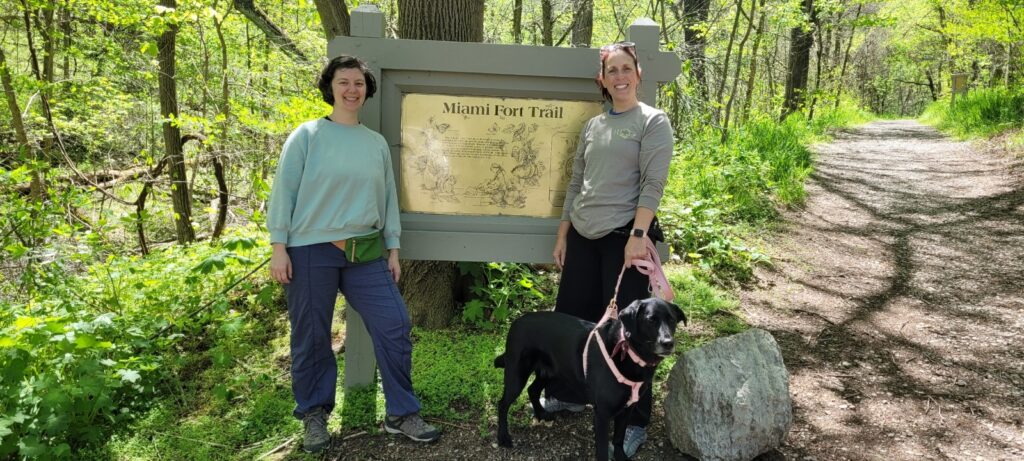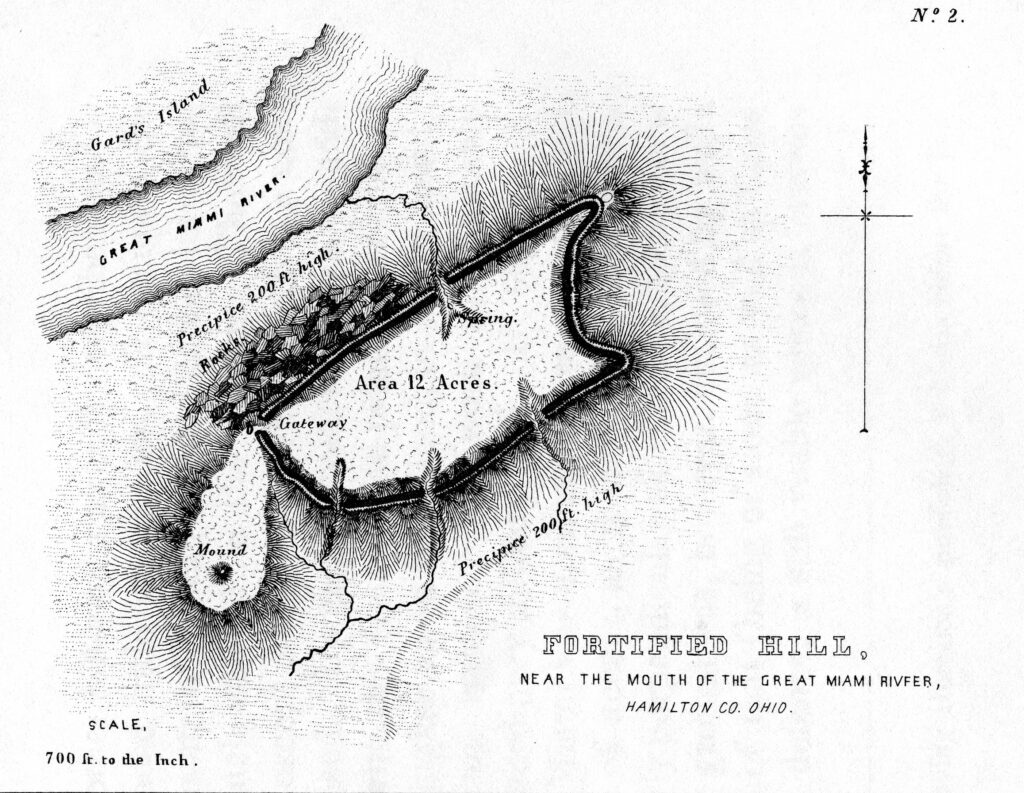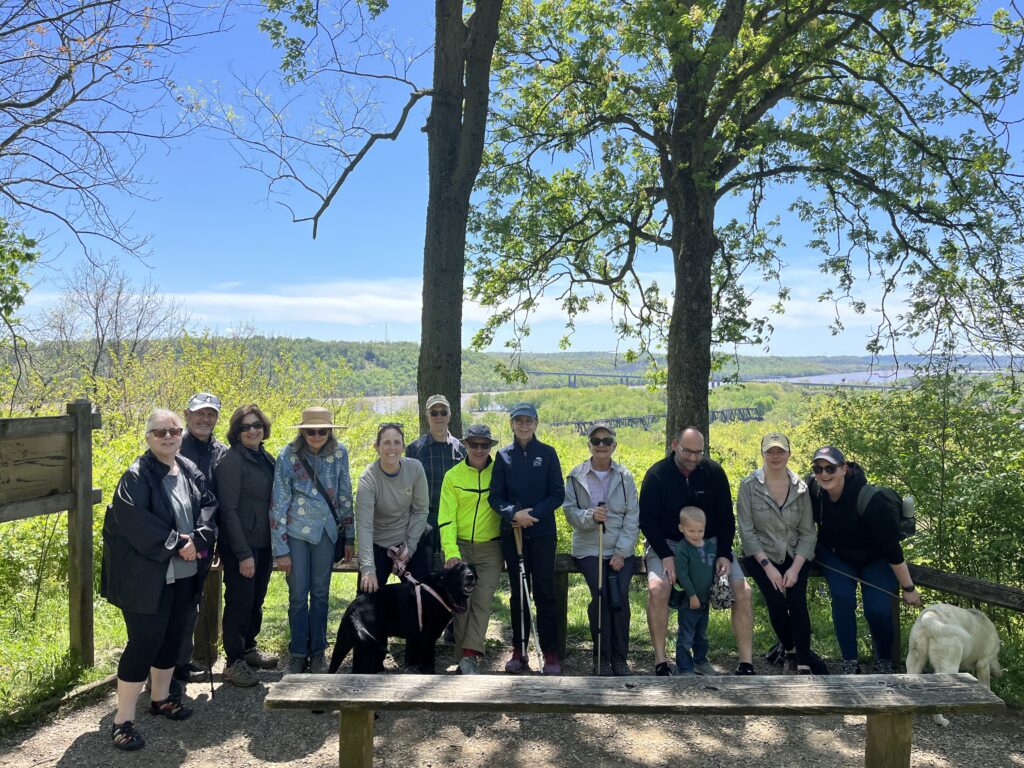Exceptional Sites of Cultural Preservation and Architecture

photo courtesy earthworks.site by Sean Chaney
Cincinnati Earthworks
Like many other places throughout Ohio in addition to the ones mentioned above, Cincinnati once had Earthworks spread over the basin including at the confluence of the Ohio and Licking Rivers and Deer Creek.
The formation of Cincinnati in December of 1788 began the reduction in size and ultimately, the destruction of the incredible Earthworks likely built sometime between 1 and 400 CE.
In 1815 a book by Daniel Drake provides a detailed description and drawing of what was still left of the Cincinnati Earthworks.
Later in 1852, Charles Whittlesey recreated a drawing of the Cincinnati Earthworks for the Smithsonian Contributions of Knowledge volume 3.
You can see images and learn more here.
You can also see interactive multimedia presentations created by University of Cincinnati’s “EarthWorks” project here.
Map by Daniel Drake in 1815 from Natural and Statistical View


Fall Forum Keynote Speaker Julie Olds,
Cultural Resource Officer and citizen of the Miami Tribe of Oklahoma
Julie Olds is the Cultural Resource Officer for the Miami Tribe of Oklahoma which originated in the Great Lakes region with homelands lying within the boundaries of Indiana, Ohio, Illinois, lower Michigan, and lower Wisconsin. Olds is the keynote speaker at Cincinnati Preservation’s annual Fall Forum on October 11, 2024 where she will speak about cultural preservation.
As a member of the myaamia, commonly called Miami today, meaning the downstream people, her work is committed to the perpetuation of myaamia cultural identity through efforts in reclamation, restoration, revitalization and preservation.
“We can help folks realize what they are walking on. Think about who lived here, who built here, who buried here. Preservation is where our footprints have taken away what was once here and the knowledge about what was.”
-Julie Olds

Today, we are blessed with the ability to view Earthworks around the state of Ohio from above seeing their full scope, beauty and symmetry while their creators understood them and the continuity of human occupation from a ground level. Despite the unfortunate destruction of the Cincinnati Earthworks, we can still perpetuate their heritage through sharing and learning about the inherent knowledge of indigenous people’s history, language and culture

Lindsey Armor, Beth Johnson, and McKinely of Cincinnati Preservation
Back to Our Roots
Cincinnati Preservation Association was founded in 1964 and was originally called the Miami Purchase Association. The organization’s creation was in part, to advocate for the preservation of Earthworks, including Miami Fort, which is a publicly accessible Hopewell Earthwork in Shawnee Lookout Park. Miami Fort (and Fort Ancient) are not actual forts. The term “fort” is a misnomer that reflects biases of early Euro-American archaeologists that interpreted the hill top enclosures as forts because they appeared similar to European fortifications. In reality, these hill top enclosures are designed spaces that emphasize and modify the natural geographic landform on which they are built, and some had engineered features to control erosion and contain water.

Miami Fort 1848 From Ancient Monuments of the Mississippi Valley by Ephraim Squier and Edwin Davis

Members of Cincinnati Preservation enjoyed an Anniversary Hike of the Fort Miami trail in April 2024
Thankfully, due to the joint effort in the sixties, these Earthworks remain protected through the continued stewardship of Great Parks of Hamilton County.
Sixty years later, Cincinnati Preservation is now the go-to resource for saving historic sites and structures throughout all of the Greater Cincinnati region. Focused on education, outreach and advocacy the non-profit empowers people to value, preserve and save our historic buildings, communities, landscapes and stories.
Earthworks and the many other aspects of cultural preservation of the American Indians are important pieces of the preservation movement that have long been overlooked. Today, Mound Street in Cincinnati’s West End may be the only indicator that Earthworks were here long before we were. The Cincinnati Adena Tablet was recovered from the demolition of an early Woodland cemetery mound there.
“Cincinnati Tablet is made from a very fine-grained sandstone and is undoubtedly the most iconic prehistoric artifact yet found in downtown Cincinnati. It was recovered during the fall of 1841 when a grading team was removing a complex of human-made burial mounds near Fifth and Mound Streets, which today is a large UPS facility just west of Interstate 75.”
-Tyler Swinney, NAGPRA Coordinator and Tribal Liaison
As we aim to tell the full story of our collective human heritage, we are reminded that the brilliant and industrious technicians who built and used Earthworks once located in the precise places we work, live and play today (such as the Washington Park area), have much to teach us.

Mound Street in downtown Cincinnati’s West End
